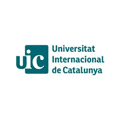Architecture Schools and Programs in Spain

Bachelor in Architectural Studies
The Bachelor in Architectural Studies program gets students ready to change the world and create important surroundings. This program has a project-based approach and a varied body of lecturers and students. It combines technical, environmental, creative and social elements and is forward-thinking and ground-breaking in its approach and energy. IE School of Architecture and Design teaches students to understand the essential skills and tools of architecture, whilst at the same time, encouraging them to consider and give real thought to how the skills and tools could be used in the future.
The Bachelor in Architectural Studies degree fosters a select internship program that allows students to gain important work experience in some of the most respected studios around the world. This is all thanks to the international recognition bestowed on IE School of Architecture and Design’s.
The Bachelor in Architectural Studies program takes five years to complete and it gives students access to the one-year Master in Architecture. To achieve professional licensure in Spain and the European Union this is required.
Level: Undergraduate Bachelors
Language of instruction: English
Location: Segovia

Master in Architectural Management and Design
The Master in Architectural Management and Design program is geared towards undergraduate students in Architecture, Architectural Design and other associated studies. The aim of the program is to enrich professional vocations by integrating business intelligence in that area. The Master will give the students the required tools and knowledge to open up prestigious positions in prominent companies and architecture studios. This Master will even provide students with the knowhow needed to set up their own business.
The Master in Architectural Management and Design program can be studied in Madrid and will take thirteen months to complete.
Level: Graduate
Language of instruction: English
Location: Segovia

Master of Arts in Interior Architecture
In Suffolk’s Master of Arts in Interior Architecture program, students will learn with instructors who are amongst the area’s best artists and designers. Educators that work at the highest level of their disciplines and they’re keen to share their expertise, visions and professional associations with students. Students will also have individual access to their mentors and professors.
Suffolk’s staff and students come from countries around the world. This mixture will enrich s student’s education and provide them with precious world views that they can apply to their work. Whilst at Suffolk, a student can take part in on-campus exhibits and go to the school’s Annual Sustainable Design Trade Show.
Previous Suffolk graduates have had success as designers at non-profit organisations, entrepreneurs, design show hosts on HGTV, lighting and exhibition designers and members of leading interior and architectural companies worldwide.
Level: Graduate
Language of instruction: English
Location: Madrid

Bachelor's Degree in Architecture
UIC Barcelona is dedicated to providing its students with the finest academic preparation in both the theoretical and practical fields and also to affording them the tools which are required for successful access to the labour market.
In order to accomplish these objectives efficiently, UIC Barcelona has cultivated a pedagogical approach based on these tools and methodologies:
Personalised attention. The ratio is 20 students per lecturer.
Job offers. We have a list of national and international job offers.
International methodology and teaching in English. Many subjects are taught in English from the 1st academic year.
Advice and coaching. Students are allocated an academic advisor and a professional coach.
Vertical Workshop. Intensive project Workshop engaging teams of students from second through to fifth year.
Forum. Series of conferences connecting prestigious national and international architects.
Advanced technology. UIC carry out a workshop on how to make scale models and digital architecture which is pioneering in Spain.
Level: Undergraduate Bachelors
Language of instruction: Catalan, English, Spanish
Location: Barcelona

Master International Cooperation: Sustainable Emergency Architecture – Official
UIC’s Master International Cooperation: Sustainable Emergency Architecture – Official degree prepares architects, urban planners and other specialists to develop and rebuild communities affected by climate change, rapid urbanization, military conflicts and economic crises in developed and developing countries. This one-year program offers students with the required theoretical and methodological background to develop a multi-disciplinary approach and administer projects in cooperation and sustainable development stretching from the urban to the architectural scale.
This master program trains both professionals and academics to critically intervene in the environment of international collaboration and urban development. A mandatory internship period gives students the connections and experience required to acquire positions in institutions such as municipal planning offices, research institutes, international cooperation agencies and consultancy firms that manage post-disaster and post-conflict contexts, international cooperation, human settlements, slum improvement, foreign aid and infrastructure development, as well as other areas. This master provides instant access to PhD programs in Europe after approving the 60 ECTS because of its official accreditation.
Level: Graduate
Language of instruction: Catalan, English, Spanish
Location: Barcelona

Doctorate in Architecture
The organised set of research and learning activities that lead to acheiving the title is called the doctoral programme. The Doctorate in Architecture programme at the UIC provides two lines of research: Architecture and Projects and Architecture and Technique.
For each programme, a set of lines of research is classified within a field of knowledge associated with one or more faculties, departments or institutions of the University. In addition, it defines the skills the student must acquire to obtain the title of doctor.
All doctoral programmes delivered to students are modified to the European Higher Education Area, in accordance with the regulations on university programs as defined by Spanish Royal Decrees 1393/2007 and 99/2011.
Level: Doctorate
Language of instruction: Catalan, English, Spanish
Location: Barcelona

Climate Concrete 3.0 - Shared Performance, with CEMEX Research Group in Switzerland
The Chair in Industrial Construction and the Environment (CEIM) at UIC's School of Architecture has prepared, in partnership with the CEMEX Research Group in Switzerland, a new continuing education program called "Climate Concrete: Concrete Porous Walls Project with CEMEX Research Group in Switzerland”.
This course looks to demonstrate the massive potential of porous concrete in increasing the energy performance and air quality of buildings. This course is available to all students from UIC Barcelona’s School of Architecture, in addition to architecture students from other universities.
In this course, participants will develop a particular formula for concrete and design a construction system to develop the building envelope. They will also improve a full-scale prototype of the proposed system for completing laboratory tests and proving the behaviour of the material and project in different scenarios.
Level: Professional Development
Language of instruction: Catalan, English, Spanish
Location: Barcelona

Intensive course “Construction in Wood”
The aim of the course “Wood Construction”, offered by the UIC’s School of Architecture, is to give participants the chance to discover the huge environmental value that this raw material can give to construction. Using wood significantly reduces the amount of CO2 released during the building and construction processes. It is a substance that, due to its characteristics, is easy to recycle and notably improves thermal and acoustic insulation when used at a structural level.
The main aim of the Wood Construction course is to investigate the ecological, technical and architectural properties of this substance, providing participants with a comprehensive look at the wood supply chain. Through the programme the participants will experience the entire process, from the preliminary analysis of the trees’ properties in the forest to the last construction process. At the end of the course, the students will need to submit their own proposals for an experimental wood building.
Level: Professional Development
Language of instruction: Catalan, English, Spanish
Location: Barcelona
Find Schools by City:
Alcala de HenaresAlfara del PatriarcaAlmeríaBarcelonaCiudad RealGironaGranadaGuadalupeHoyo de ManzanaresLa CoruñaLas Palmas de Gran CanariaLeioaMadridMalagaMoncadaPamplonaPozuelo de AlarcónSan Vicente del RaspeigSegoviaSevilleTarragonaValenciaValladolidVillafranca del CastilloVillanueva de la CañadaVillaviciosa de OdónVitoriaZaragozaArchitecture Studies in Spain
Spain is a beautiful country, a country where old-world charm and cosmopolitan modernity blends effortlessly to create a progressive country steeped in tradition and architectural splendor. Students who opt to pursue an education in Architecture in Spain, perhaps as part of a study-abroad program, will benefit both personally and professionally by studying in the country—a country that welcomes international students and whose universities offer several unique program options in the field. When not busy with their classroom studies, students can stroll the streets of Spain and be treated to some of the most amazing architecture they’ll find anywhere in the world, representing a number of different styles, schools and eras, some dating back several hundred to a thousand years.Spain, officially known as the Kingdom of Spain, is a sovereign state and a participating member nation of the European Union. Located on the Iberian Peninsula in southwestern Europe, Spain’s mainland is bordered by the Mediterranean Sea to the south and east, to the north and northeast by Andorra, France and the Bay of Biscay, and to the west and northwest by Portugal and the Atlantic Ocean. Spain is one of three countries, with Morocco and France, to have both Atlantic and Mediterranean coastlines, and its border with Portugal, measuring 754 miles (1,214km), is the longest uninterrupted border within the European Union. Spain is a highly developed country with a parliamentary government under a constitutional monarchy. The country is ranked as one of the top 10 countries in the world for its standard of living; and its excellent education system, including its universities, is on par with other educational giants in Europe such as England and Germany.
Architecture Education in Spain
Spain is rapidly becoming a rising star in the science and technical fields, including the field of architecture. This field of study is offered by the majority of the major universities in Spain, at both the undergraduate and graduate level. In general, the undergraduate program in Architecture takes 3-4 years to complete for full-time students, ultimately culminating in a Bachelor of Science degree. Most students, however, tend to continue their studies by pursuing a two-year Master of Science degree in Architecture, considered the minimum qualification to pursue the field professionally.
The programs in Architecture consist of two pillars: classroom-based education in the form of seminars and lectures; and practical education, where students are involved in project and design work. At the graduate-degree level, students are asked to choose a specialty within the Architectural discipline in which to focus their studies. The different specializations draw on the knowledge students have gained during the undergraduate portion of their studies, and may include areas such as sustainable building design; construction technology, structural engineering and design; planning and building in existing structures; project management and cost control; and urban planning and design.
Why Study Abroad in Spain
Studying architecture in Spain not only enables students to receive a top-notch education from qualified instructors who are passionate about the field, it exposes them to some of the finest examples of early and modern architecture in the world. Wherever you happen to go to in Spain you’ll encounter a mix of architectural styles, ranging from Moorish influences to European trends to surreal modernism. Below are just a few of the architectural wonders students can visit when they choose Spain as their study-abroad destination.
Alhambra Palace
Located in the city of Granada in Spain, the Alhambra Palace, also known as the Red Castle, contains some of the world's finest examples of Moorish architecture. Perched on a rocky, steep terrace at the southern tip of Granada, the Alhambra Palace is an ancient residence and fortress featuring breathtaking frescoes and fine interior details. In the characteristic style of the Mudéjar (Muslims or Moors who remained in Europe), the Alhambra Palace incorporates many traditional Islamic details, including column arcades, fountains, reflecting pools, geometrical patterns, Arabic inscriptions and painted tiles.
First constructed in the mid 14th century, the Alhambra Palace was built for the last Muslim Emirs (kings) in Spain and the Nasrid Dynasty. In the 1700s, the palace was renovated for King Charles V, and the result was one of the world’s most stunning mixtures of Moorish and European influences. Sadly, for many centuries the Alhambra was neglected, but scholars and archaeologists began restorations in the late 19th century and today it stands as one of Spain’s most popular tourist attractions and a UNESCO World Heritage Site.
Alcazar Palace
Located in the city of Seville in Spain, the Alcazar is a fortified palace built by order of King Abd Al Ramn III in the year 913 AD. Due to its beauty, the palace served as the residence for many monarchs in the centuries that followed, and is now occupied by His Royal Majesty Juan Carlos when he visits Seville.
Between 1350 and 1369, Pedro the Cruel (Pedro I) made significant additions to the Alcazar palace; a palace which had long stood as one of the finest and most important examples of Mudejar architecture in the region. Today its numerous rooms, patios and halls vary substantially in terms of architectural styles, ranging from Islamic to Neoclassical. Among its many stunning features are the beautiful gardens that surround a large hand-carved fountain.
The Monastery of El Escorial
No discussion of Spanish architecture would be complete without mentioning the Monastery of El Escorial near Madrid, Spain. Situated some 30 miles northwest of Madrid in the foothills of the Sierra de Guadarrama Mountains, the Monastery was built as a monument to commemorate the Spanish victory over the French in the battle of Saint Quentin on August 10th of 1557 (the feast day of St. Lawrence). King Felipe II selected the site for the monastery, some 1,028 meters (3,372 feet) above sea level, and personally oversaw the progress of the project. The monastery was initially designed by the Spanish architect Juan Bautista de Toledo, but after his death in 1567, his assistant Juan de Herrera continued the work. Construction lasted 21 years from 1563 to 1584, and for many years after its completion, El Escorial Monastery was the largest building in the world.
The decoration of the Monastery was entrusted to prominent Italian painters of the time who were responsible for the Gallery of Battles and the Library among other rooms. Works of Titian, Bosch, El Greco, and Velázquez proudly hang in the Chapter Rooms and Sacristy. Overall there are about 1,600 paintings and more than 500 frescoes on the walls and ceilings. Visitors to the Monastery of El Escorial can also take advantage of the very interesting Museum of Painting and Architecture, located on the grounds.






